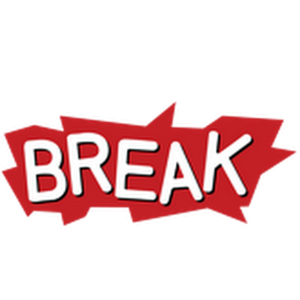 Hello, we are Hayden and Kaitlin, the Director of Studies and the Assistant of the Director of studies at the Gold Coast Campus. As you can imagine we LOVE teaching and we specially love teaching those topics that (even though might be difficult for students when they see it first) they can be explained easily like Present Perfect Simple and Present Perfect Continuous !
Hello, we are Hayden and Kaitlin, the Director of Studies and the Assistant of the Director of studies at the Gold Coast Campus. As you can imagine we LOVE teaching and we specially love teaching those topics that (even though might be difficult for students when they see it first) they can be explained easily like Present Perfect Simple and Present Perfect Continuous !
Have you ever wondered what the difference between Present Perfect Simple and Present Perfect Continuous is? Well, if you have and you are still a little unsure about it, then we’re here to help you.
To be honest, there are only a few differences between the two tenses, the first being the type of verb that we use. When we use Present Perfect Simple, we normally use a verb that has a short action and when we use Present Perfect Continuous, we use a verb that has a long action.
So, let’s look at short and long action verbs. Take the verb ‘break’, for example.

The verb ‘break’ is a short action; therefore, we use the Present Perfect Simple tense. For example, I have broken my glasses
If we use the verb ‘wait’, which is a long action (because we can wait for a long time), we use Present Perfect Continuous. For instance, I have been waiting for 20 minutes.

Here are some examples of short action verbs; drop, break, switch, open, close, start, finish, arrive, leave, depart and commence. We call these short action verbs because they don’t take very long to do. You will have noticed that we used the word normally above to talk about short action verbs and Present Perfect Simple. Actually, it is quite acceptable to use long action verbs with this tense as well, but we absolutely cannot use short action verbs with Present Perfect Continuous. For example, I have worked here for 5 years and I have been working here for 5 years are both appropriate. On the other hand, class has been starting is not appropriate as start is a short action verb. So, we can only say class has started.
Of course, another reason why we choose Present Perfect Simple over Present Perfect Continuous is when we want to highlight that the action has been completed. Take “I have read 5 books this year” as an example. Present Perfect Simple has been used in this case to emphasise the fact that I have finished reading 5 books. However, when we use Present Perfect Continuous, it is unclear to the listener or reader as to whether the action is complete or not, but rather the focus is more on the length of the action.

To illustrate, I have been cleaning the house all day. The use of Present Perfect Continuous here indicates that this action has been a rather lengthy one, but does not actually specify whether the action is complete or not. Expressions like for 3 days and all week are common in this tense. In the end guys, it depends on what the writer or speaker wants to make clear as to which tense they will use to do so.
And finally, as most of you will already know, we use the Present Perfect Simple to talk about past experiences. For instance, I have been to Japan. The important thing to remember here is that we should not use a past time marker like 3 days ago, last year or in 1989 with this tense. Of course, when we want to specify a past point in time, we need to use Past Simple. For example, I went to Japan in 1989.
So, we hope we’ve helped with any doubts that you may have had about these tenses. The only thing to do now is to get out there and start practising!